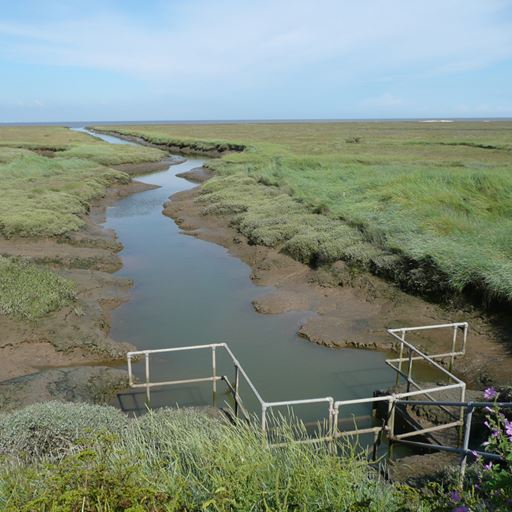Impact: Protecting and enhancing our valuable salt marsh

At the core of the UK Government’s plan to protect the environment and reverse decades of degradation is the goal to enhance society’s environmental assets – aka our natural capital.
Essex research provided essential evidence on the value of salt marsh and devised methodologies which enabled the development of key tools for the Government to quantify salt marsh natural capital and shape its Pioneer Programme’s policy recommendations.
These recommendations are now adopted nationally by the Marine Maritime Organisation and Department for Environment, Food and Rural Affairs (Defra) in delivering the 25 Year Environment Plan.
Essex research also identified how biodiversity can be enhanced when incorporating salt marsh into sea defence infrastructure. This so-called “green-grey” approach was adopted by the Environment Agency and Natural Resources Wales, enhancing natural capital in coastal defence policy.
The challenge
The UK Government established the Pioneer Programme in 2017 to inform and implement its ambitious 25 Year Environment Plan (YEP) – a living blueprint of action to help the natural world regain and retain good health.
The Pioneer Programme consisted of four national projects to test natural capital approaches in urban, river, landscape and marine environments. The Marine Pioneer ran in North Devon and Suffolk. The Suffolk Marine Pioneer’s focus was on determining the natural capital value of salt marsh.
What we did
The Suffolk Marine Pioneer project undertook a natural capital assessment for salt marsh restoration and other ecosystem services, including fisheries.
Marine and freshwater biologist Professor Graham Underwood has carried out extensive research into salt marsh which has been used to underpin evidence to determine carbon stocks of salt marshes and mudflats across north-west Europe.
Based on his previous research experience in measuring natural capital, Professor Underwood was invited to work directly with the Pioneer team from 2017 to 2020 to build the natural capital work programme.
The Pioneer required a method to calculate “asset extent” and “asset condition” which non-technical specialists could use. The crucial contribution Essex’s work made was in developing a tool to determine salt marsh carbon stocks and potential carbon storage and enhanced fish nursery provision through salt marsh restoration, identified by the Pioneer as a key method “to define asset condition in relation to ecosystem service provision”.
These approaches were used by the Pioneer to estimate carbon value and fish value using a natural capital approach.
Increasing sea levels and salt marsh loss threatens coastal defence sea walls with increased erosion and damage. The Environment Agency has a programme of repairs and sought to incorporate elements of salt marsh restoration in these new structures to enhance natural capital.
Professor Underwood’s research on salt marsh and mudflat ecosystems led to him being directly approached in 2012 by the Environment Agency to assess their programme of repairs of coastal defence sea walls.
By identifying the factors for successfully incorporating salt marsh habitat into repairs of coastal defence infrastructure and associated natural capital, Professor Underwood’s research provided essential scientific evidence for the success criteria of these schemes.
What we changed
The Essex research findings, which developed methods for evidencing baseline quality and potential enhancement of salt marsh natural capital, were key outcomes of the Suffolk Marine Pioneer and shaped the recommendations of the final report published in May 2020.
The Pioneer outcomes are contributing to key lessons for Government and Defra agencies including the Marine Management Organisation (MMO) as they implement the 25 Year Environment Plan.
The Essex research has enabled the Suffolk Marine Pioneer to provide new cost-effective and deliverable methods on how the natural capital approach can succeed and has influenced the overall UK Pioneer programme outcomes produced by the MMO.
Essex research has also shaped UK coastal defence policy by supporting the development of “green-grey” infrastructure, incorporating salt marsh into coastal defence structures by the Environment Agency (EA) and Natural Resources Wales.
It provided the EA with the confidence that this approach to sea wall repair could enhance salt marsh development and biodiversity, and led the Agency to install a further 900m of these structures in wall repairs, enhancing natural capital by adding 0.2 hectares of salt marsh habitat in another 14 locations in Essex.
This “green-grey” approach for seawalls is also recommended by Natural Resources Wales as a part of their Welsh flood policy and has been promoted by the Institute for Civil Engineers.